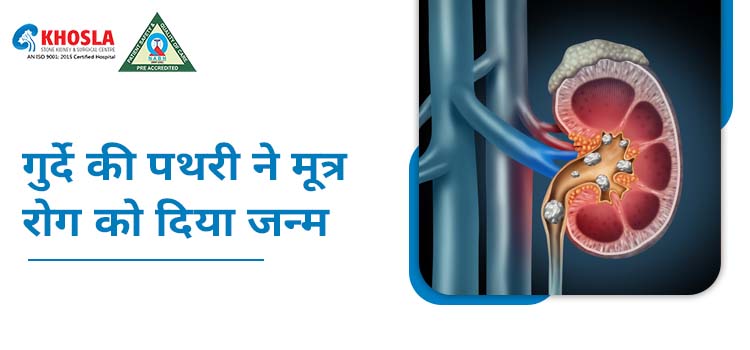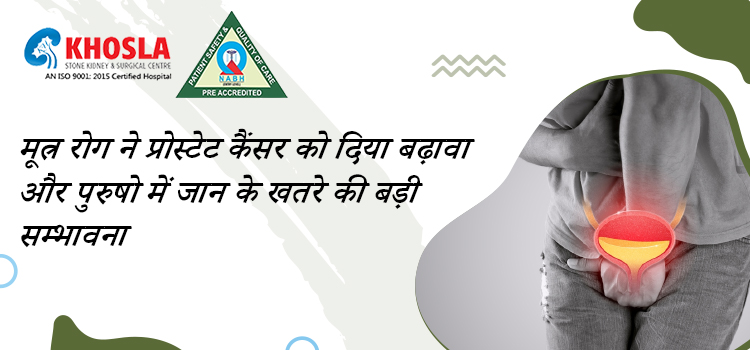![]()
We all know that kidney stones take place in our kidneys because of the hard formation of mineral and salt crystals. Whenever you reach out to your Urologist in Punjab, they will examine the kidney stone issue, and based on the size of the kidney stone and its location in your kidney, the doctor will suggest the best laser treatment for it.
RIRS Surgery is the most reliable minimally invasive surgical option for removing kidney stones. If you are planning to move forward with RIRS Surgery in the coming future, then this post is a must-read for you.
Here we will discuss this treatment method and its advantages over traditional methods like laparoscopy surgery in Ludhiana.
What is RIRS Surgery?
The full form of RIRS Surgery is Retrograde Intrarenal Surgery, a minimally invasive endoscopic procedure that can help you treat kidney stones and other such health conditions.
During the procedure of RIRS Surgery, a minimally looking endoscope is sent through the urethra of the patient that goes to your ureter. Later it is sent to the kidney.
With the help of this procedure, the surgeon could get a better visualization of the kidney stone issues faced by the patient so that they can remove the kidney stone effortlessly.
RIRS Surgery has several advantages over other kidney stone treatment methods. There are a few kidney stone treatment methods that offer you help in breaking up kidney stones, but when we talk about RIRS Surgery, it can help you directly in getting rid of the kidney stone problem without any complexities.
How is RIRS Surgery Performed?
Before moving forward with the RIRS Surgery, your surgeon will carry on several diagnostic tests to know about the size of your kidney stone location and diagnose any other health issues that the patient has or can affect the RIRS Surgery procedure.
Some commonly performed diagnostic tests before RIRS Surgery are blood tests, blood urea nitrogen tests, imaging tests, urinalysis, and more.
Once the tests are done and the reports are normal, the doctor is ready to carry forward the surgical procedure. Let us look at the step-by-step procedure of RIRS Surgery in the coming section.
Step By Step Procedure Of RIRS Surgery
Let us have a look at the step-by-step procedure of your RIRS surgery is performed:
1- In the first step, the surgeon will give you anesthesia to sedate you during the procedure. Once that is done, doctors are ready to move to the next step. Although the surgeon can pick general or spinal anesthesia per the patient’s preferences.
If you are afraid of the procedure, the doctor can provide strong anesthesia.
2- Later, the insertion process of the endoscope is carried forward. An endoscope is a long tube that can be directly taken to the urine collection area in your kidney, although the doctors take the help of x-ray reports to trace the kidney stone.
Secondly, with the endoscope, surgeons can get a good view of the kidney, making the overall surgical procedure easy.
3- Once the endoscope has found the kidney stone, the laser attached to the endoscope breaks the kidney stone, and all the fine particles of the kidney stone are collected from the same passage.
This was all about the procedure of RIRS Surgery. Understanding the procedure is crucial, as it will help you know more about the things that will take place in your body wherever you will move forward with the surgical procedure.
Recovery After RIRS Surgery
In normal cases of RIRS Surgery, the patient would have to go through a recovery time of 24 to 48 hours; during the recovery time, the patient is suggested to drink a lot of water, with the help of which the urine flow can take place.
At last, with the help of that flow of urine, if any particle of kidney stone is left in the kidney, it can easily move out of your body.
Along with that, make sure that you are taking all the prescribed medicines on time.
Benefits of RIRS Surgery
Several people need clarification about the treatment methods for kidney stones. In this section, we will talk about the benefits of RIRS Surgery over other types of kidney stone treatment methods.
- Minimally invasive surgery:
The most significant benefit of RIRS Surgery is that it is a minimally invasive surgery, while other kidney stone treatment options require proper invasion for the overall procedure.
Hence if you want to opt for a treatment method that is risk-free and out of all the complexities, then RIRS surgery is the perfect option for you.
- Prevents pain & discomfort:
You would not have to go through much pain and discomfort after getting treated using RIRS Surgery. As in RIRS Surgery, an endoscope is inserted inside our body through the urethra, and all the processes are done through the endoscope only.
No further procedures are involved in the overall process.
- Faster recovery:
The recovery time of RIRS Surgery is faster, as the patients can easily recover from this surgical procedure within 24 to 48 hours. However, the patients must ensure they drink water and take the prescribed medicines on time.
- Lower complications:
You would not have to go through any serious complications with RIRS Surgery and can take advantage of an effective surgery.
Conclusion:
RIRS is a minimally invasive surgery that can help you get rid of kidney stone issues without serious complications. We hope you learned about the overall procedure and benefits of this surgery over other treatment methods.
Contact Khosla Stone Kidney & Surgical Center to learn more about RIRS and other kidney stone treatment options.






